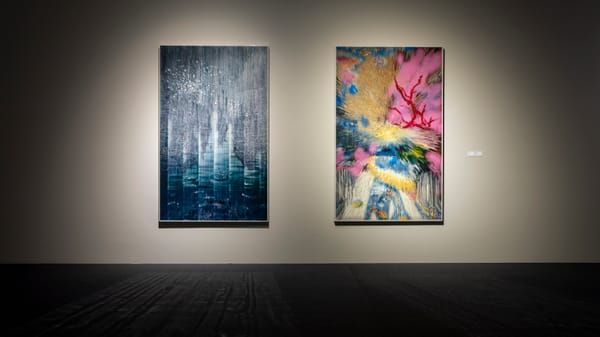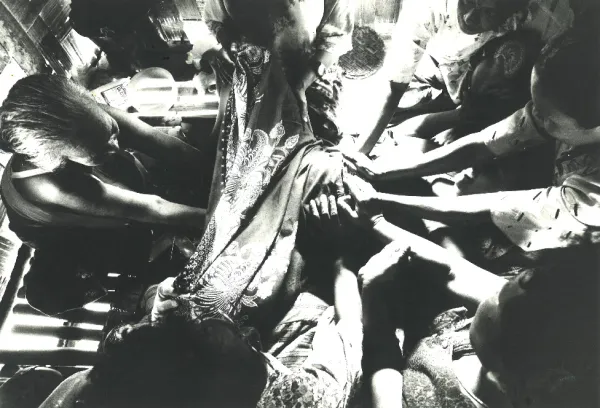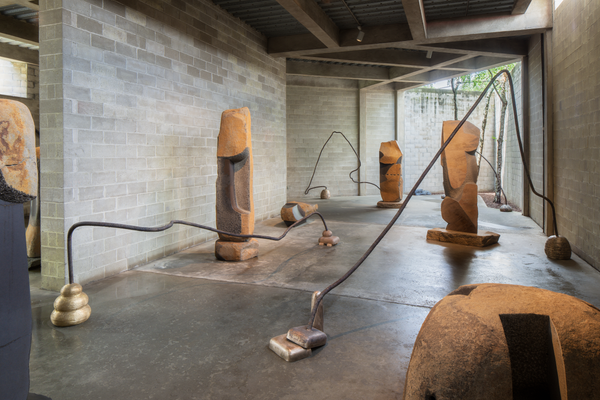Shows
Latif al-Ani’s “Through the Lens 1953–1979”


The photographer Latif al-Ani was destined to capture Iraq’s transition to modernity. Born in 1932 in Karbala, he purchased his first camera at the age of 15, inspired to document life and the people around him. In 1953, he joined Ahl Al Naft (People of Oil) magazine as a trainee photographer under the British expatriate Jack Percival, who helped him develop his aesthetic eye. In 1960, he was hired by the Ministry of Culture, where he was tasked with creating a photographic archive of the country, which at the time was emerging as a regional power partially due to increased business around Iraqi oil reserves. In his work for these two organizations, al-Ani was granted exclusive access to the inner mechanisms and the people within Iraqi society, revealing an extraordinary moment in the history of a country that has since been dominated by political strife and war. Yet his practice was short-lived; al-Ani stopped taking pictures in 1979 due to the growing storm of authoritarianism leading up to the Iran-Iraq War.
When viewed in 2018, al-Ani’s images appear to be rooted in nostalgia and anticipation, serving to highlight the optimistic visions of the past. Shown in full at the Sharjah Art Foundation in an exhibition titled “Through the Lens 1953–1979,” the archive traces al-Ani’s career, from his early years as a young photographer on oil drilling sites to his travels abroad. Although a modernist at heart, al-Ani was attracted to the ruins of great Iraqi civilizations and was driven by a curiosity to explore how these monuments might function in the country’s transition to modernity. For example, Family from the American Friends of the Middle East Organization on a Visit to Iraq (Ctesiphon Arch, Iraq) (1964) depicts a couple of affluent-looking, middle-aged American tourists standing in front of an ancient monument in Baghdad, their explicit Western sensibilities clashing with the appearance of a blind local musician playing a stringed instrument nearby. Similarly, Ancient City of Babylon (Shooting a Film on Tourism in Arab Countries, Hillah, Iraq) (1970) features a smartly dressed European woman posing against a backdrop of ancient ruins for a foreign tourism campaign. These scenes suggest a tension between history and modernity, as well as illuminating the contrast between foreign and local—another recurring motif in al-Ani’s body of work. Additionally, there is an element of voyeurism in these images that suggests that, at the time, heritage was being refashioned as a product to be consumed by the outside world, and that nostalgia was being exploited as a promotional tool.

Al-Ani’s portraits, especially of women, hint at an egalitarian aesthetic and epitomize the progressive modernist ideals of the time. His female subjects pose against a car on a city street or are captured walking a dog, offering a fresh visual narrative to the pervasive image of oppressed, shrouded Middle Eastern women. For example, in Sports in School (Baghdad, Iraq) (1960), we see middle-class women in short athletic skirts at gym class, an ode to global female empowerment as well as to the modernization of women’s roles in Iraq. In contrast to these images, at the back of the gallery were portraits of rural Iraq—where modernization developed at a slower pace—and its various ethnic minorities, thus reflecting the multiple realities existing during this period. In these images, the subjects—which include the highly-persecuted Yazidis—are smiling, their poses easy and relaxed. These powerful images attest to al-Ani’s skill in capturing individual personalities as well as larger narratives around a society before it changed forever, giving a human face to the complicated ramifications of development and progress.


When the present is so overwhelmingly traumatic, it has the potential to erase the past, a sentiment that affected al-Ani deeply and fueled his passion as a photographer. He shows the beauty of his country through his lens, and presents an optimistic vision of his home country, reminding the viewer that there were once different stories of many alternative possibilities and outcomes. Al-Ani’s images stand as a haunting testament to the potential of a place long gone, yet the hope radiating from these photographs still inspire, especially today.
Latif al-Ani’s “Through the Lens 1953–1979” is on view at Sharjah Art Foundation until June 16, 2018.







